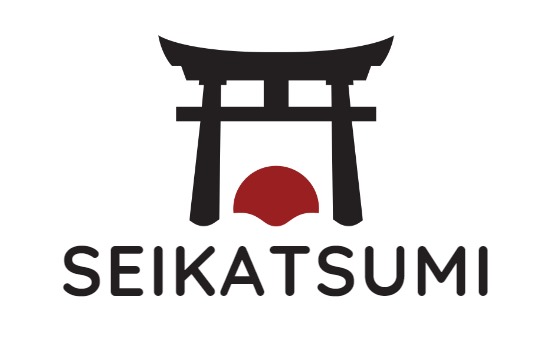Are you captivated by the art of tattoos, especially the intriguing Japanese snake tattoo? I am too!
I’ve always been mesmerized by the rich history and deep meanings behind tattoos. After hours of research and fascination, I’ve delved deep into the world of Hebi Irezumi, the Japanese snake tattoo.
I’m excited to share with you the allure and significance of these iconic tattoos.
So, why wait? Let’s explore the captivating world of Japanese snake tattoos together! 😉
History of Japanese Snake Tattoos
As a lover of tattoos, I have always been fascinated by the rich history and symbolism behind Japanese tattoos. One of the most popular and intriguing designs is the Japanese snake tattoo.
These tattoos have a deep cultural significance and a fascinating history that dates back centuries.
In Japanese mythology, the snake is seen as a symbol of renewal, transformation, and protection. This symbolism is derived from the story of Yamata no Orochi, an eight-headed serpent slain by the god Susanoo.
The story goes that Susanoo was tasked with slaying the serpent in order to save a princess who had been offered as a sacrifice to the beast. After a fierce battle, Susanoo was able to defeat the serpent and cut off its heads.

As he cut off each head, he discovered a magical sword that he used to finally kill the beast.
The story of Yamata no Orochi has been retold in countless forms throughout Japanese history, and the symbolism of the serpent has remained a powerful and enduring image in Japanese culture.
Japanese snake tattoos often depict the oriental idea of a snake, which is different from the Western idea of a snake.
In Japan, the Hebi (snake) is also a popular tattoo subject. The snake in the Japanese tradition carries a meaning of rebirth, transformation, and change, mostly because snakes are known for shedding their skin.
Japanese snake tattoos can also be a symbol of good luck if a snake is white.
















Symbolism and Meanings
Japanese snake tattoos have a deep and rich history, with each design carrying its own unique symbolism and meaning.
These tattoos are highly regarded in Japanese culture and are often associated with qualities such as wisdom, protection, and transformation.
Protection and Good Fortune
One of the most common meanings associated with Japanese snake tattoos is protection. Snakes are often depicted as guardians, warding off evil spirits and protecting their wearer from harm.
In Japanese mythology, the snake is also associated with good fortune and prosperity, making it a popular choice for those seeking success in their endeavors.
Strength and Power
Another common meaning of Japanese snake tattoos is strength and power. Snakes are known for their ability to shed their skin and emerge stronger and more powerful than before.
This aspect of the snake’s nature is often incorporated into tattoo designs, symbolizing the wearer’s ability to overcome adversity and emerge stronger on the other side.
Hey you! Are you interested in more tattoo trends? Then be sure to check out our top tattoo articles! You definitely can’t miss it!
Japanese Skull & Oni Mask Tattoos: 100+ Ideas You’ll Love 2024
The Best Japanese Half Sleeve Tattoos 2024: 25+ Be the next Trendsetter!
60+ Japanese Anime Tattoos: Expert Tips for Timeless Ink Mastery 2024
Rebirth and Transformation
Finally, Japanese snake tattoos are often associated with rebirth and transformation. Snakes are seen as creatures of change, shedding their skin and transforming into something new.
This aspect of the snake’s nature is often incorporated into tattoo designs, symbolizing the wearer’s desire for growth and personal transformation.
Popular Japanese Snake Tattoo Designs
As a tattoo enthusiast, I have always been fascinated by Japanese snake tattoos. These tattoos are not only visually stunning but also rich in symbolism and meaning.
Hebi and Ryu Tattoos
One of the most popular Japanese snake tattoo designs is the Hebi and Ryu tattoo. This design features a snake and a dragon, which are both powerful creatures in Japanese mythology.
The snake represents wisdom, while the dragon represents strength and good luck. Together, they create a powerful and balanced tattoo design.
Snake and Cherry Blossoms
Another popular Japanese snake tattoo design is the snake and cherry blossoms. This design features a snake wrapped around a cherry blossom tree.
The cherry blossom is a symbol of beauty and transience in Japanese culture, while the snake represents wisdom and protection. This tattoo design is not only visually stunning but also rich in meaning.
Snake and Skull Motifs

For those who prefer a darker and edgier tattoo design, the snake and skull motif is a popular choice. This design features a snake wrapped around a skull, which represents death and mortality.
The snake, on the other hand, represents rebirth and renewal. This design is a powerful reminder of the cycle of life and death.
The Artistic Process
As someone who appreciates the beauty and symbolism of Japanese snake tattoos, I understand the importance of finding the right artist to bring my vision to life.
Here are some considerations I keep in mind when embarking on the artistic process:
Choosing the Right Artist
When selecting an artist, I look for someone who has experience in creating Japanese-style tattoos and has a portfolio that showcases their skill in this area.
I also read reviews from previous clients to get a sense of their professionalism and ability to work collaboratively.
Incorporating Traditional Elements
To ensure that my tattoo stays true to the traditional Japanese style, I work with my artist to incorporate elements such as waves, cherry blossoms, and koi fish.
These elements not only add to the aesthetic appeal of the tattoo but also deepen its cultural significance.
Color and Composition Considerations
When it comes to color, I opt for a palette that complements the natural colors of a snake, such as greens and browns.
I also consider the composition of the tattoo, making sure that it flows well with the contours of my body and doesn’t appear disjointed.
Cultural Significance and Controversy

Japanese snake tattoos have a rich cultural significance that dates back to ancient times. In Japanese mythology, the snake is a powerful symbol of transformation, wisdom, protection, and healing.
The snake is believed to have the power to shed its skin and be reborn, making it a symbol of renewal and regeneration.
Snakes also have a darker side in Japanese culture and are associated with danger and deceit. According to some beliefs, snakes can transform into humans and deceive them.
This duality of the snake’s nature is often reflected in the design of Japanese snake tattoos.
Despite the cultural significance of Japanese snake tattoos, there is also controversy surrounding them. Historically, tattoos were associated with criminal activity in Japan and were often used to mark criminals as a form of punishment.
Today, tattoos are still stigmatized in some parts of Japanese society and are often associated with the yakuza, Japan’s organized crime syndicates.
In recent years, there has been a growing movement to reclaim the cultural significance of Japanese tattoos and to recognize them as an art form.
However, there are still many public spaces in Japan where people with tattoos are not allowed, such as public baths and swimming pools.
Aftercare and Maintenance
Taking care of your Japanese snake tattoo is crucial to ensure it looks its best and lasts a long time. Proper aftercare will help prevent infection, fading, and other issues that can affect the appearance of your tattoo.
Here are some tips to help you take care of your new ink:
Keep it clean
It’s important to keep your tattoo clean to prevent infection. Wash the tattoo gently with mild soap and warm water, and then pat it dry with a clean towel.
Avoid using harsh soaps or scrubbing the tattoo too hard, as this can damage the skin and cause the ink to fade.
Moisturize regularly
Keeping your tattoo moisturized is essential to prevent it from drying out and cracking. Use a fragrance-free, non-comedogenic moisturizer to keep your tattoo hydrated.
Apply the moisturizer gently, and avoid rubbing the tattoo too hard.
Protect it from the sun
Exposure to the sun can cause your tattoo to fade and lose its vibrancy. Avoid direct sunlight and tanning beds, and always wear protective clothing and sunscreen when you’re outside.
Avoid swimming
Swimming in pools, hot tubs, and natural bodies of water can expose your tattoo to bacteria and other harmful substances.
Avoid swimming until your tattoo has fully healed, which can take several weeks.
Follow your artist’s instructions
Your tattoo artist will give you specific instructions on how to care for your tattoo. Follow these instructions carefully to ensure your tattoo heals properly and looks its best.
If you have any questions or concerns, don’t hesitate to contact your artist for advice.
With proper aftercare and maintenance, your Japanese snake tattoo will look amazing for years to come.
Remember to keep it clean, moisturized, and protected from the sun, and follow your artist’s instructions to ensure a successful healing process.
My personal favorite snake motif!

In my opinion, snake tattoos are most striking when rendered in black and white. The stark contrast of these monochromatic designs accentuates the intricate details and the fluid motion of the snake, making the artwork more vivid and captivating.
Moreover, embellishing these tattoos with lotus leaves adds a layer of depth and symbolism. The lotus, with its connotations of purity and enlightenment, creates a beautiful juxtaposition with the snake, which is often seen as a symbol of transformation and rebirth.
This combination not only enhances the aesthetic appeal but also infuses the tattoo with a rich blend of meanings, making it not just a piece of art, but a narrative etched on the skin.
Frequently asked Questions
What is the significance of a Japanese snake tattoo?
In Japanese culture, snake tattoos (Hebi Irezumi) symbolize wisdom, protection, and transformation. They are also believed to bring good fortune and prosperity.
Can anyone get a Japanese snake tattoo?
Yes, anyone can get a Japanese snake tattoo. However, it’s important to understand and respect the cultural significance and symbolism associated with these tattoos.
What are common design elements in Japanese snake tattoos?
Common elements include the snake itself, often depicted with intricate scales, and may include cherry blossoms, waves, or tigers to convey different meanings and aesthetics.
If you liked this blog article about japanese snake tattoos, don’t forget to follow us on Pinterest so you don’t miss any more tattoo tips.
Let us know, which of the above ist your favorite tattoo motif!



I appreciate, cause I found exactly what I was looking for. You have ended my four day long hunt! God Bless you man. Have a nice day. Bye